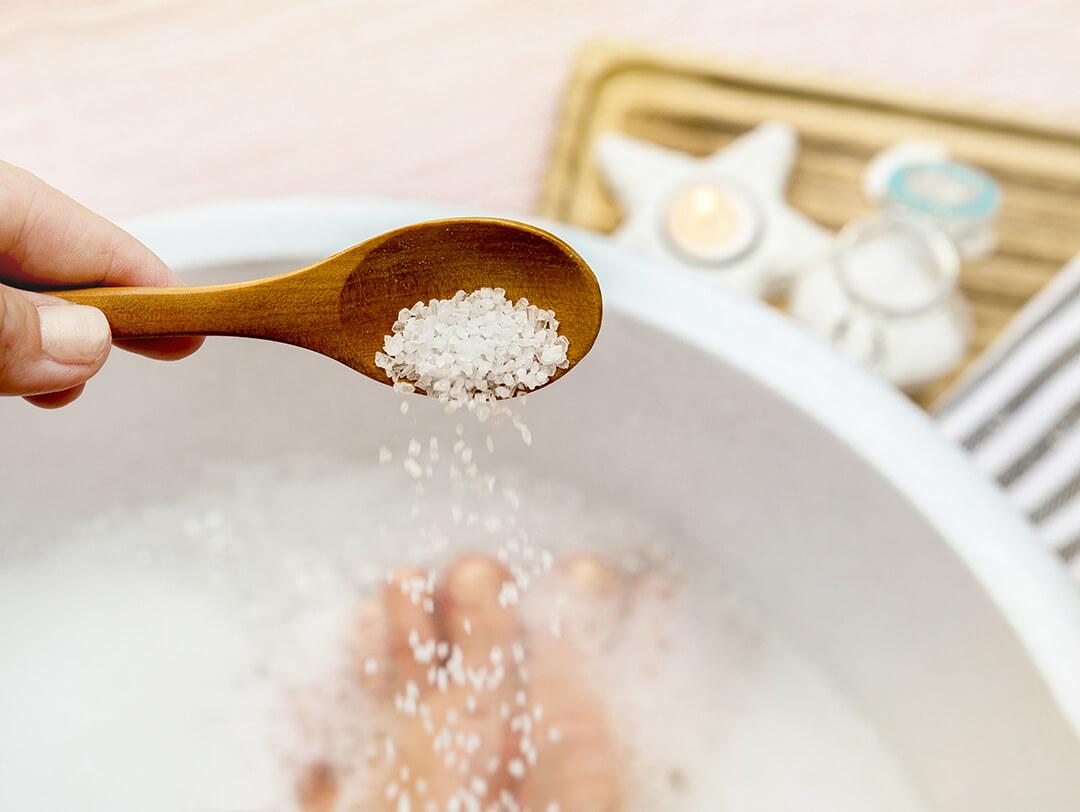Everything You Need to Know About Foot Detoxing and How to Do It at Home



Cortney Clift


At health, wellness, and holistic spa destinations, there's a new treatment that's becoming increasingly popular: foot detoxing. A foot detox is dramatically different from a foot massage or your classic pedicure. In short, a foot detox can help detoxify the body by removing toxins and heavy metals through the feet. In wellness studios, foot detox sessions are most frequently done via an ionic foot bath (more on the ins and outs of that below).
Like many holistic-style health practices, there are few scientific studies that support the benefits of foot detoxing—however, it's also been shown not to be harmful to most (note: use caution if you have any open wounds or are diabetic). Want to learn more about ionic foot baths or find a DIY way to treat your feet? We chatted with Vanessa Drew, founder of The Detox Studio by Cleansing Concepts about the benefits of foot detoxing and more.


It's about glam time you treated yourself.
MEET THE EXPERT
Vanessa Drew is the founder of The Detox Studio by Cleansing Concepts, a holistic, natural medicine destination in New York City.
How does a foot detox work?
At Drew’s studio, foot detoxes are conducted via an ionic foot bath. She explains, "The foot bath machine creates positive and negative ions into the water through electrolysis. Ions are charged particles that neutralize toxins that are stored in the body on a cellular level. The toxins are neutralized, then drawn out of the body through reverse osmosis (into the water). The water will change color drastically depending on the toxicity level of an individual and their ability to release toxins."
While the dramatic change in the color of the water may indicate the release of toxins, it's worth pointing out that ionic foot detoxes will change color on their own, whether or not feet are soaking in the basin. While the stark shift in the water's color is visually striking (sometimes even shocking), it shouldn't solely be what you base the detox's efficacy off of.
What are the benefits of a foot detox?
The wide purported benefits of foot detoxing ranges from weight loss to relief from chronic pain. Drew says, "The biggest benefits of a foot detox is the detoxification process, which in turn, results in stress relief, boosting the immune system, reducing inflammation, improving circulation, and reducing the toxic burden we are constantly being exposed to–especially heavy metals. It also assists the body in healing itself and can provide better sleep and more focus." At this point, these benefits are primarily anecdotal as little scientific research has been done surrounding the practice of ionic foot baths. That being said, it is also generally considered to be safe. So if you're curious to see if foot detoxing will help you, there's no harm in trying it.
How often should you do a foot detox?
"If you're looking to do a full foot detox, we suggest doing it twice a week for one month, once a week for another month, then every other week for a month," says Drew. "Most people will just come one to three times a month depending on their needs."
How to DIY your own foot detox
While ionic foot baths by brands like IonCleanse are the most popular way to conduct a foot detox bath at holistic spas and wellness studios, they can be quite expensive to purchase for personal use and tend to retail for close to $2,000 per machine. While Drew believes that ionic detoxes have the greatest effect, there are other more affordable ways to conduct a foot treatment at home. Here are a few popular methods.
Detox foot pads: For a waterless solution, you can try using detoxifying foot pads. These are pads you stick to the soles of your feet and leave on overnight to help rid toxins from the body. Most dermatologists and doctors point out that there haven't been any proven benefits from these pads, but say they aren't harmful if you'd like to give them a try.
Bentonite clay foot mask: This ancient, natural skincare ingredient has been used for its purifying properties for centuries. Bentonite clay is made from volcanic ash and carries a slight electrical charge that can attract and draw out toxins from deep within your skin. That's why it's been a top ingredient in facial masks for decades. Some research shows that bentonite clay may also help treat metal poisoning, but more studies are needed to confirm these results. This ingredient is proven to be antibacterial and anti-inflammatory so it's a great solution if your feet tend to swell.
Epsom salt foot bath: If you want the luxurious experience of a foot bath without the price of any ionic machine, you can create your own detox foot spa at home by adding Epsom salt to warm water with a few drops of your favorite essential oil. This is also thought to provide anti-inflammatory and healing benefits. Note: If you try an epsom salt bath, use the real stuff. While epsom salt may look similar to table salt, they are entirely different compounds. Epsom salt is made of both magnesium and sulfate, whereas table salt is sodium. Swapping one for the other won't work. The two are similar in that both can be quite drying. After an epsom salt foot bath, be sure to moisturize your feet.
Create your custom combo: "One of my favorite at-home foot detox methods is to dry brush your feet to activate all your acupuncture meridians," Drew says. "Then, I mix 1/2 cup of our detox clay powder with 2 tablespoons of Epsom salt in warm to hot water, and do a foot soak for 15 minutes."
Will you try an at-home foot detox? Let us know @IPSY!
Want in on all the IPSY Glam Bag fun? Take our Beauty Quiz now to get started. Already an Ipster? Refer your friends to earn points, which you can use toward products. Either way, don’t forget to check us out on Instagram and Twitter @IPSY.
Liked this post? Share!
Related Stories


Skin
How to Adjust Your Skincare Routine for Mature Skin in the Winter
Published on Dec 4, 2025 • 7 min read


Skin
Meet the Best Moisturizers for Winter, According to Dermatologists
Published on Dec 1, 2025 • 9 min read


Skin
What Is Inflammaging—and Why Everyone’s Talking About It
Published on Dec 1, 2025 • 8 min read


Skin
6 Skincare Trends to Have on Your Radar in 2026, According to Experts
Published on Dec 1, 2025 • 7 min read


Skin
We Grabbed Our Crystal Ball and Found These 6 Skincare Predictions for 2025
Published on Dec 10, 2024 • 7 min read


Skin
Simple Self-Care Tips That Actually Make a Difference
Published on Nov 13, 2025 • 12 min read


Skin
These 9 Face Scrubs Will Unlock Soft and Smooth Skin on Contact
Published on Nov 5, 2025 • 10 min read


Skin
10 Thanksgiving Foods That Will Have Your Skin Coming Back for Seconds
Published on Oct 15, 2025 • 7 min read


Beauty Picked Just for You
Get 5 products worth up to $70
Plus exclusive access to epic deals up to 80% off
Starting at just $14/month. Cancel anytime.